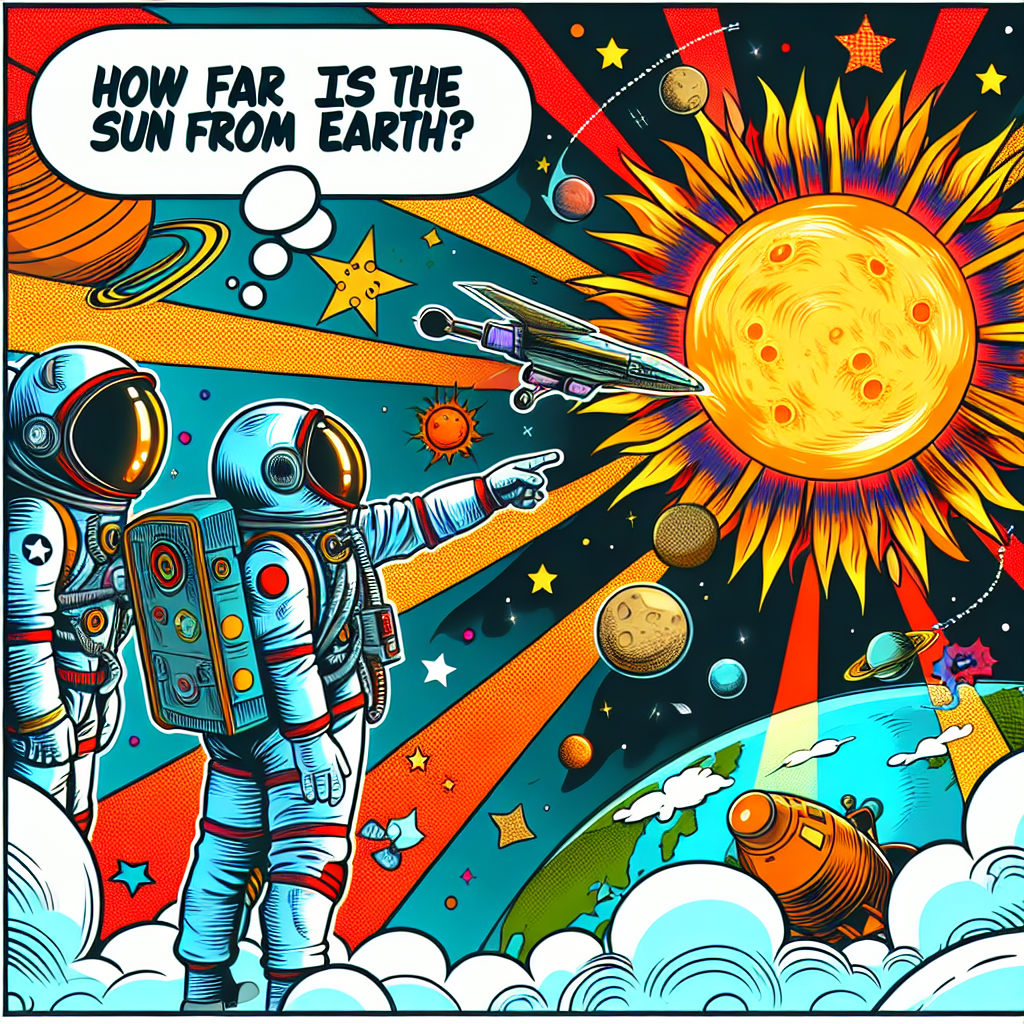The Sun is the center of our solar system, and Earth is just one of the eight planets that orbit around it. So, how far is the Sun from Earth, exactly? Well, let's start with a scale model to put things into perspective. Imagine a basketball representing the Sun, and a pea representing Earth. In this model, the distance between the two would be about 43.4 meters, or roughly the length of a basketball court.
Now, that's a big court, but not quite big enough to match the real deal. The average distance from the Earth to the Sun is about 149.6 million kilometers (92.96 million miles). That's like going from New York to Los Angeles and back again, about 175 times! To put it another way, if you were to drive your car at a steady 100 kilometers per hour (62 miles per hour), it would take about 175 years to reach the Sun from Earth.
But why do we need to know the distance to the Sun so precisely? Well, it's essential for understanding many aspects of our solar system. For instance, the distance to the Sun affects the Earth's climate, as it determines how much energy we receive from the Sun. The distance also plays a crucial role in the calculation of the trajectories of spacecraft, like those sent to Mars or Venus.
Measuring the distance to the Sun is no easy feat, by the way. It's not like we can just pull out a tape measure and start measuring! Scientists have developed various methods over the centuries to estimate this distance, each with its own set of limitations and uncertainties. One of the earliest methods, used by the ancient Greeks, involved measuring the angle of the Sun's shadow at different latitudes.
A more modern approach is to use the transit method, where astronomers observe the time it takes for a planet like Mercury or Venus to pass in front of the Sun. By knowing the planet's orbital period and the angle of its orbit, scientists can calculate the distance to the Sun. Another technique involves measuring the time it takes for a spacecraft to travel from Earth to another planet, like Mars, and then calculating the distance based on the spacecraft's speed and trajectory.
Astronomers have also used the property of parallax to measure the distance to the Sun. Parallax is the apparent shift of an object's position against a background when viewed from different angles. By observing the position of nearby stars from opposite sides of the Earth's orbit, scientists can calculate the distance to those stars, and then use that information to estimate the distance to the Sun.
Today, we have even more precise methods, like using radar and laser ranging. These techniques involve bouncing radar signals or laser beams off reflectors left on the Moon's surface during the Apollo missions. By measuring the time it takes for the signals to return, scientists can calculate the Moon's distance from Earth, and then use that information to determine the Sun's distance.
The distance to the Sun is also constantly changing due to the elliptical shape of Earth's orbit. The closest point in the orbit, called perihelion, occurs around early January, when the distance is about 147.1 million kilometers (91.4 million miles). The farthest point, called aphelion, occurs around early July, when the distance is about 152.1 million kilometers (94.5 million miles).
So, to summarize, the average distance from the Earth to the Sun is about 149.6 million kilometers (92.96 million miles). This distance is crucial for understanding various aspects of our solar system, from the Earth's climate to the trajectories of spacecraft. Over the centuries, scientists have developed several methods to estimate this distance, each with its own set of limitations and uncertainties. Today, we have precise methods like radar and laser ranging that allow us to calculate the distance with high accuracy.
In the grand scheme of things, the distance to the Sun is just one piece of the puzzle that helps us understand the vast and complex universe we inhabit. As we continue to explore and learn more about our cosmos, we're reminded of how small we are in the grand scheme, yet how remarkable our achievements are in understanding the workings of the universe.

Popular Space Questions
Find answers to the trending space questions being asked by our community on social media.
- How many galaxies are there in the universe?
- How far is Pluto from Earth?
- How many planets are in the Milky Way?
- What would happen if a rogue planet entered our solar system?
- How many planets are in our solar system?
- How big is the Earth?
- What are the planets in order?
- How big is the universe?
- What if we found a way to manipulate gravity?
- What would happen if a pulsar's beam hit Earth?